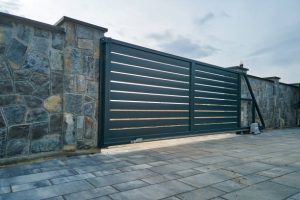Extending the lifespan of your roof not only safeguards your investment but also ensures the safety and comfort of your home. Given that a roof is a substantial financial commitment, understanding the best practices to prolong its durability is crucial. From regular maintenance to proper ventilation, employing the right strategies can significantly enhance your roof’s longevity. In this guide, we’ll explore the most effective methods to ensure your roof remains in excellent condition for as long as possible.
By following these comprehensive strategies, you can significantly extend the lifespan of your roof and avoid costly repairs or replacements.
1. Regular Inspections
Regular roof inspections are essential for identifying and addressing potential issues before they become significant problems. Schedule professional roof inspections at least once a year and more frequently after severe weather events. During these inspections, a roofing professional will assess the condition of your roof, checking for signs of wear and tear, damage, or vulnerabilities. It’s also wise to consider adding a chimney inspection Portland, OR, to ensure all aspects of your roofing system are adequately evaluated. Early detection of issues such as missing shingles, damaged flashing, debris buildup, or chimney problems allows for timely repairs and helps prevent more extensive damage.
2. Prompt Repairs
Addressing any roofing issues promptly is vital to extending your roof’s lifespan. Whether it’s a small leak, a damaged shingle, or a problem with the flashing, delaying repairs can lead to more extensive damage and higher repair costs. If you notice any signs of damage or wear, such as water stains on the ceiling, cracked shingles, or loose flashing, contact a professional roofer as soon as possible to make the necessary repairs. Timely intervention helps prevent minor issues from escalating into major problems.
3. Gutter Maintenance
Proper gutter maintenance is crucial for extending your roof’s lifespan. Gutters and downspouts direct water away from your roof and foundation, preventing water damage and erosion. Regularly clean your gutters and downspouts to remove leaves, twigs, and other debris that can cause blockages. Clogged gutters can lead to water overflow, which can damage the roof, cause leaks, and contribute to foundation problems. Additionally, ensure that gutters are securely attached and in good condition to facilitate proper water drainage.
4. Proper Ventilation
Adequate roof ventilation is essential for maintaining a healthy roofing system. Proper ventilation helps regulate the temperature and humidity levels in the attic, reducing the risk of heat and moisture buildup. Excessive heat and moisture can lead to problems such as shingle deterioration, mold growth, and wood rot. Ensure that your roof has proper ventilation by installing vents such as ridge vents, soffit vents, and gable vents. Regularly check and clean these vents to ensure they function effectively, much like how regular dryer vent cleaning Portland services can help maintain safety and efficiency in your home.
5. Weatherproofing and Sealing
Weatherproofing and sealing are essential for protecting your roof from the elements. Ensure that all seams, joints, and penetrations, such as those around chimneys, vents, and skylights, are properly sealed to prevent water infiltration. Regularly inspect and maintain these seals to ensure they remain intact and effective. A roof sealant or coating can also protect against UV rays, moisture, and other environmental factors.
6. Address Overhanging Branches
Overhanging branches can threaten your roof by causing physical damage and contributing to debris buildup. Trim back branches close to or touching your roof to prevent them from scratching or puncturing the roofing material. Additionally, trimming branches helps reduce the amount of debris that falls onto the roof, which can help prevent clogs in the gutters and minimize the risk of damage.
7. Proper Insulation
Proper attic insulation plays a significant role in extending the lifespan of your roof. Insulation helps regulate temperature and prevents heat from escaping through the roof, reducing the risk of ice dams and condensation. Ice dams occur when heat from the attic melts snow on the roof, refreezing the eaves and causing water to back up under the shingles. Ensure that your attic is adequately insulated and that the insulation is evenly distributed to maintain a consistent temperature and prevent moisture-related issues.
8. Quality Roofing Materials
Investing in high-quality roofing materials can significantly impact the longevity of your roof. Choose roofing materials that are durable and suited to your climate, such as asphalt shingles, metal roofing, or clay tiles. Higher-quality materials often come with more extended warranties and better performance, reducing the likelihood of frequent repairs or replacements. Consult a roofing professional to select materials that offer your needs the best protection and longevity.
9. Regular Cleaning
Keeping your roof clean is essential to maintenance, especially when considering services like roof cleaning in Portland. Remove debris, such as leaves, branches, and dirt, that can accumulate on the roof’s surface. Accumulated debris can trap moisture, leading to mold growth and damage to roofing materials. Use a soft-bristle brush or a leaf blower to gently remove debris without causing damage to the shingles. Avoid using a pressure washer, as the high pressure can damage the roofing material and remove granules from shingles.
10. Professional Maintenance
Regular professional maintenance is vital to ensuring your roof remains in optimal condition. Schedule routine maintenance with a licensed roofing contractor to inspect and service your roof. A professional can identify potential issues that may not be visible to the untrained eye and perform necessary repairs or adjustments. Regular maintenance helps keep your roof in top shape and can extend its lifespan by addressing minor problems before they become major.
Final Thoughts
extending your roof’s lifespan involves a combination of regular maintenance, timely repairs, appropriate ventilation, and proper installation. Homeowners can avoid costly repairs and premature replacements by paying attention to these critical aspects. A well-maintained roof enhances your home’s aesthetic appeal and value and provides essential protection against environmental elements. Implementing these best practices will ensure your roof stands the test of time, safeguarding your home for years.




